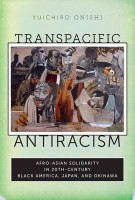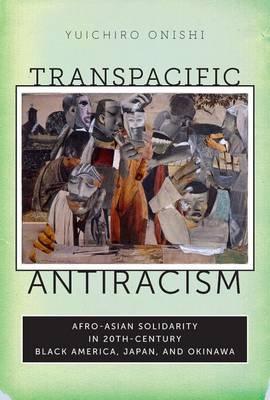 Author: Yuichiro Onishi
Author: Yuichiro Onishi
Publisher: New York University Press
Book Review by: Paiso Jamakar
A little-known fact about the famous African-American civil rights leader W.E.B. Du Bois (1868-1963) is that he traveled to Europe, Africa and Asia several times, including in 1936 to Nazi Germany, China and Japan. Why did he travel to these places?
While racism was the main target of Du Bois’ polemics – and he strongly protested against lynching, Jim Crow laws, and discrimination in education and employment, as pointed out in Wikipedia, his main cause of fighting for equal rights included colored persons (probably including all non-Whites) everywhere in the world: not only Africans and Blacks, but also Asians, in their struggles against colonialism and imperialism.
Yuichiro Onishi writes that in Du Bois’ stay in Japan included a tour of the library of Tokyo Imperial University. There, he saw a collection of Japanese art, including prints of Commodore Matthew Perry’s expedition to Japan in 1854. About one of those prints, he later wrote in a column in the Pittsburgh Courier: “I…saw a print of Perry’s expedition with Negro sailors.”
Du Bois believed in the importance of education as a key to success in obtaining rights that were denied to Blacks (then called “Negroes”) by White supremacists. Perhaps to make a point of this to Blacks, he was the first African-American to receive a doctorate degree from Harvard University.
In Transpacific Antiracism, Yuichiro Onishi shows us how social movements in Black America, as well as in Japan and then U.S.-occupied Okinawa, helped form solidarity of Africans and Asians against white supremacy. He relates to us the activities of a group of Japanese scholars that helped shape Black Studies programs in post-war Japan and also multiracial coalition-building during the Vietnam War era, which brought together anti-racism and pro-peace activists, as well as anti-war GIs.
In the late 1930s, Du Bois wrote about the rise of Japan and its role in stopping Europeans from dominating China as part of their imperialist ambitions:
“Japan was rising to national status and through the Chinese War and the Russian War, despite rivalry with Germany, Russia and Great Britain, she achieved a new and nearly equal status in the world, which only the United States refused to recognize. But all this, I began to realize was but a result of the expansion of Europe into Africa where a fierce fight was precipitated for the labor, gold and diamonds of South Africa; for domination of the Nile Valley; for the gold, cocoa, raw materials, and labor of West Africa; and for the exploitation of the Belgian Congo. Europe was determined to dominate China and all but succeeded in dividing it between the chief white nations when Japan stopped the process.”
Onishi writes about Dubois’ views: “Japan had broken ‘the foolish modern magic of the word ‘White’ and had demonstrated ‘the loftiest and most unselfish striving’ of the non-White world to shake off the burden of the racial past. Dubois defended his pro-Japan position valorizing Japan’s pan-Asianism as a force of anti-imperialist nationalism against the underlying white supremacy of imperialism and colonialism…”
This is a well-researched study by Onishi on the subject of the collective anti-racist, anti-colonialist and anti-imperialist efforts by Blacks and Asians. He provides nearly 30 pages of references to books and materials in his Notes section, as well as a Bibliography of more than 15 pages. Onishi has delved into an aspect of history that was little known before the release of this groundbreaking book.
Yuichiro Onishi Assistant Professor of African American & African Studies and Asian American Studies at the University of Minnesota, Twin Cities.







